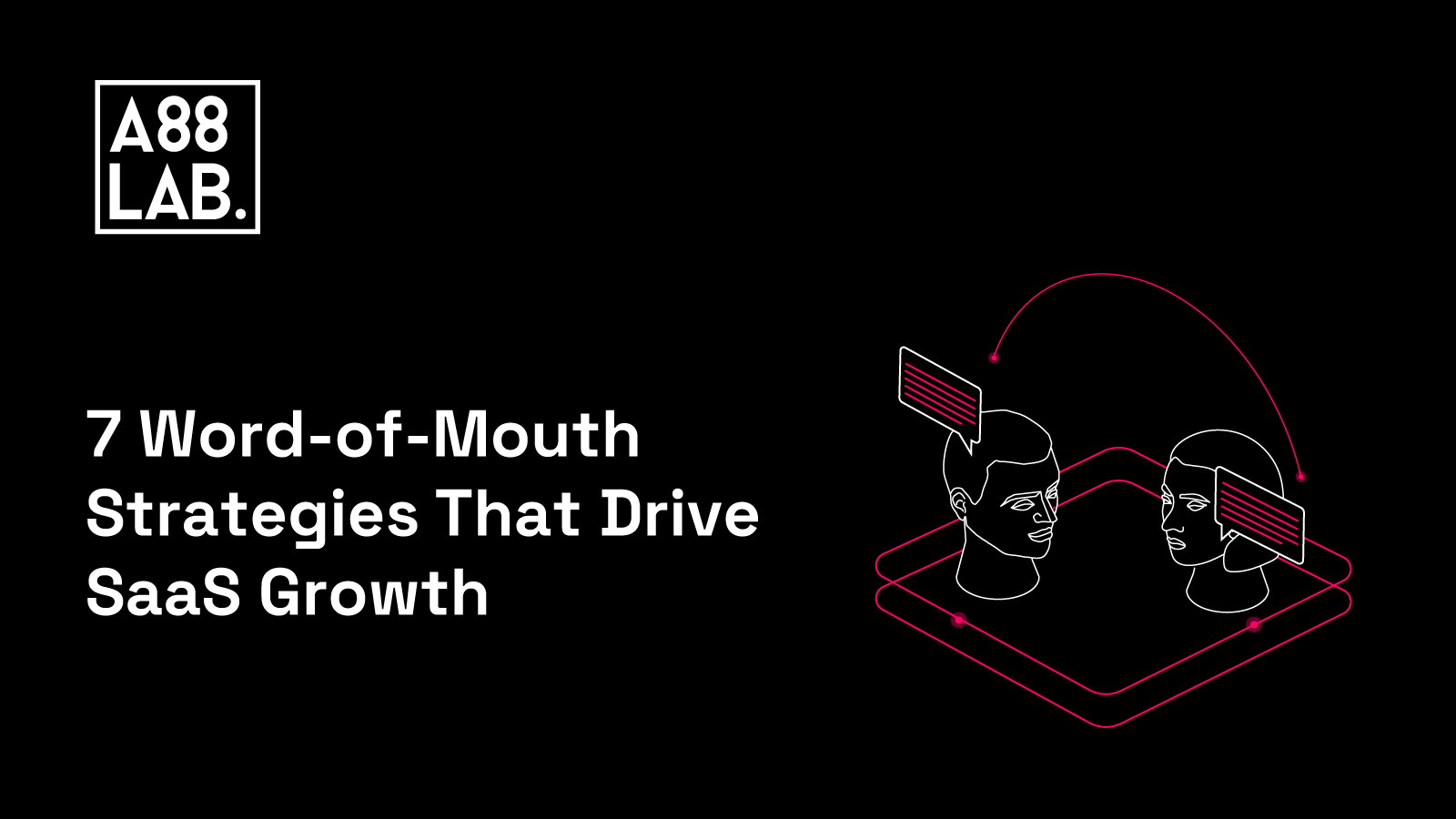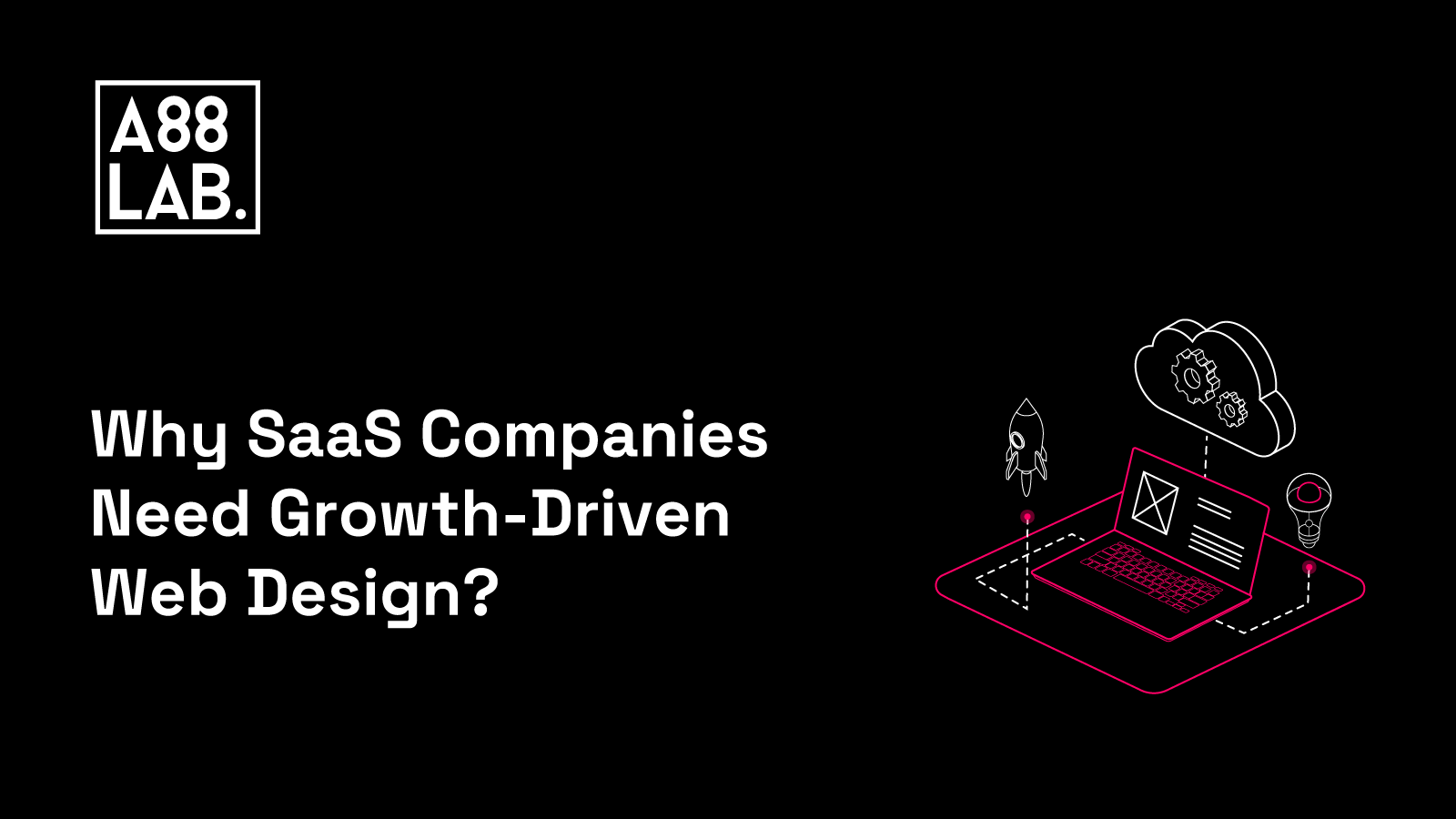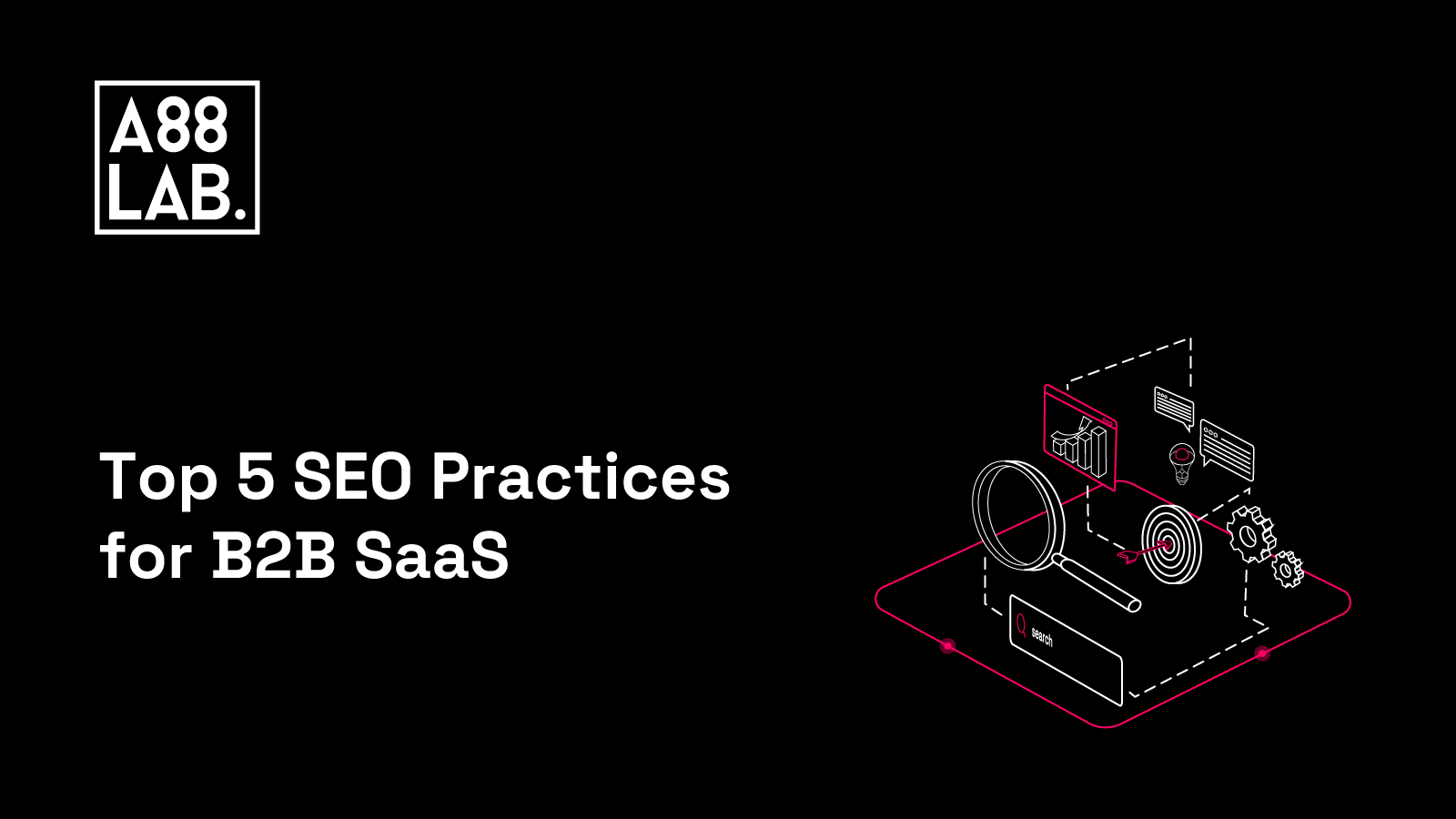Let's imagine a scene from the past: our ancestors gathered around a fire, sharing stories and experiences, like in the movies right?! This was the beginning of word-of-mouth. Today, it's the same, except we're sharing these stories online, across social networks, communities, groups and chats, rather than across flickering flames. This traditional method has slowly become a cornerstone for brands that make a real impact on their customers.
Sometimes, some of the most buzz software companies seems like they grew with little to no effort. But more often than not, the big secret of their growth is actually the word-of-mouth strategy. All of us, at least once, have told a friend about our favorite restaurant, product, productivity tool, etc. These, which seem to be just casual chats, are what makes WOM one of the most powerful marketing strategies.
Benefits of Word-of-Mouth Strategy
88% of customers trust their friends’ recommendations over any piece of traditional marketing. And Word of Mouth Marketing Association (WOMMA) cites the best word-of-mouth marketing strategies as being honest, credible, social, repeatable, measurable, and respectful. This shows how effective word-of-mouth marketing can be.
Some of the reasons why you need to start implementing this strategy are:
It's Trustworthy
People face an overwhelming amount of ads every day. It seems that everywhere we turn, there’s a marketing campaign or ad waiting to sneak attack us.
People want products from trusted companies, and they gain this trust from recommendations or reviews from other existing customers or even brand ambassadors, not from any type of branded content. When a product has a track record of being reliable, consumers feel comfortable with their purchasing decisions.
This comfort comes from trust. And trust sells.
It Increases Brand Loyalty
When someone is a brand evangelist, they would recommend your brand to everyone they know. They love what you bring to the table, see you as reliable, and believe in your mission. When someone talks highly about what you do to their friends, family, colleagues, etc, eventually, those people will also start to favor your brand over others. It creates a domino effect.
It’s Authentic
When a company relies on word-of-mouth marketing, they're creating a community based on trust and authenticity. And it is way better and easier to build relationships with customers who genuinely like your brand than to advertise it to the masses, hoping to make more sales.
Building a community of loyal customers can work wonders when launching new products. They'll be the first ones who will buy your new products just because they already trust you and love your brand. Not only that, but they will also share their positive experiences with others, engage with you on social media, post about your brand naturally, and ultimately give you a better return on investment than any other marketing campaign.
The Role of Hybrid Attribution Model in Word-of-Mouth Marketing
Although there are a lot of benefits to word-of-mouth marketing, it’s great for brand endorsement, and it’s definitely something you should aim for; there are still certain pitfalls to it.
One of the main problems with this strategy is that no matter if a friend recommends your SaaS product to another friend or if there is a certain person from a Facebook group that came to your website, the traffic will be recorded as direct or organic search in both cases, although it was actually a result of word-of-mouth.
The best way to resolve this problem is by implementing a hybrid attribution model and leaving the traditional revenue model attribution model behind.
The traditional model tends to focus on typical lead generation channels. While it's important to measure the effectiveness of these channels, attributing revenue solely to demand capture ignores what created the demand in the first place.
On the flip side, the hybrid attribution model takes a different approach and combines traditional models, such as first-touch and last-touch, with multi-touch and self-reported attribution models to create an accurate picture of customer journeys.
Using a combination of self-reported and software-based attribution helps marketers make better decisions about their demand-generation strategy. By self-reported attribution, we mean asking customers which channels brought them to us. This is especially important for channels not well-tracked by software-based attribution models, such as offline channels like events, conferences, communities, groups, etc.
Now, let's discuss the 7 most effective word-of-mouth strategies that drive growth for B2B SaaS companies based on our experience.
1. Build a Community around Your SaaS
The first step to creating an effective word-of-mouth strategy is building a community around your SaaS. How are you going to get people to spread the word about your product if you don’t have a community in the first place? We know that this is easier said than done, but trust us when we say that it’s possible.
Building a community requires a lot of time and effort, as well as a clear strategy about how you’re going to do it. Whether you choose to build your own discussion spaces for your community (like Gong, Apollo, or Meta Data) or you decide to engage in Dark Social platforms like the r/SaaS forum on Reddit, just start from somewhere.
To engage with buyers and create a lasting relationship, focus on creating a strong and loyal community that will advocate for your brand. Besides, having a well-cultivated community is a valuable asset that can set your SaaS apart.
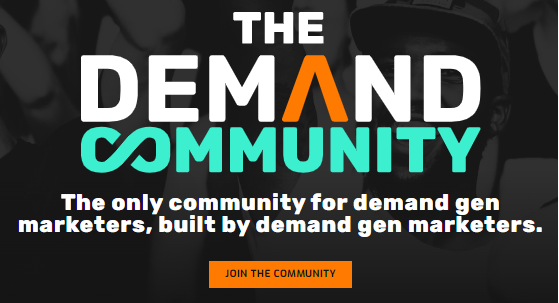
Metadata Demand Community on Slack
2. Acquire Customers through Free Trials or Freemiums
We all love receiving free things, no matter if it’s a free trial, a freemium, or some type of freebie. And when you are in the SaaS industry, offering these free things is a great way to acquire new customers who are gonna spread the word about you. When you offer a sneak peek into your SaaS for free, you leave your customers wanting more, thus increasing the chances of them turning into loyal, paying customers.
When you deliver a free thing, and people like it, they will want to tell their friends, family, and acquaintances about the positive experience they had with your product. So make sure to show the true value of our SaaS and deliver an impactful experience when offering these “sneak peeks.”
Besides, these free things are also a great way to build a sense of familiarity and trust around your brand, which are two of the essential components when customers are making their final purchase decision.
Here is how two SaaS companies go about when offering free things:
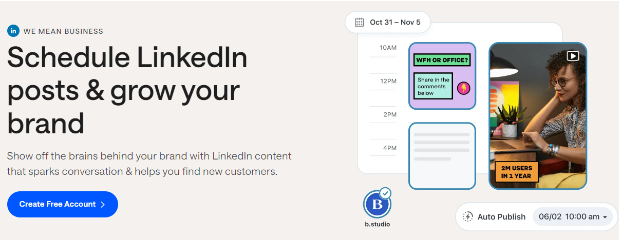
Later - a social media management tool offering a free plan where you can schedule 30 posts per platform.
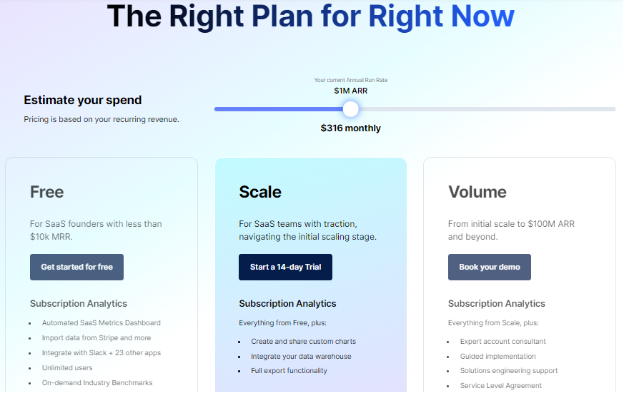
ChartMogul - subscription analytics platform offering free plan that will last forever, but with certain limited features.
3. Encourage User-Generated Content
People trust other people more than any other piece of marketing material. That is why User-Generated Content (UGC) is far more effective in selling your SaaS than some traditional marketing campaigns. It's an authentic and cost-effective way of promoting your brand that can come in many forms, from images and videos to reviews, testimonials, or even podcasts. It's actually one of the most important elements of SaaS storytelling.
To encourage users to create UGC, first, try your best to connect with them on a deeper level. Provide more personalized services, stay in touch by checking up on them to see how they like your SaaS, cooperate with them to see if there is something that needs to be improved, etc. The more connected you are to your customers, the higher the chances of them becoming your biggest supporters and fans.
And what do fans and supporters do? Share your SaaS with others and increase word-of-mouth in new markets that you may not have been able to reach otherwise. The more fans you have, the more potential customers you reach.
Having content created by your customers gets people to talk about your brand, particularly on social media, where they actively look for recommendations.
Here are some UGC tactics you can implement in your word-of-mouth strategy:
-
Create a hashtag campaign
To boost the organic reach of your posts, improve their engagement, and build your brand awareness and brand recognition, consider creating a branded hashtag for your customers to build a conversation around your brand.
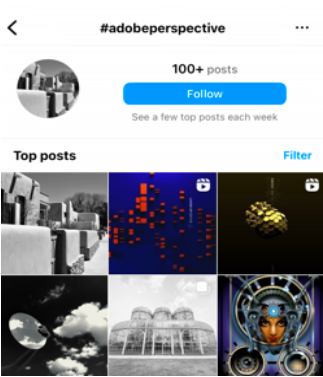
#adobeperspective hashtag showcasing the work of creative designers and artists
-
Add testimonials on your landing page
Displaying testimonials front and center on your landing page is the social proof your visitors need that makes them eager to try your SaaS.
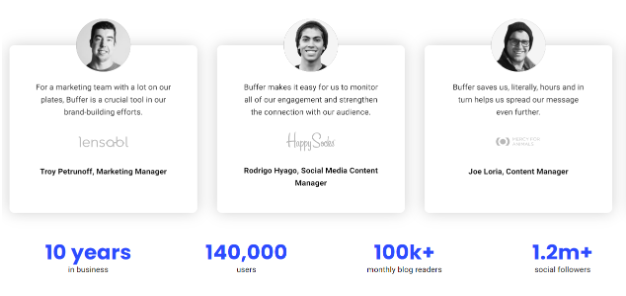
Buffer displaying customers' testimonials
- Pay attention to customer trends
Paying attention to customer trends will help you to come up with a better UGC strategy. Customer trends can provide important insights into what types of UGC content is resonating with customers. Customer trends will also tell you what topics, themes, or formats are most likely to encourage customers to create and share UGC.
4. Build Relationships With Industry Influencers and Thought Leaders
When people hear someone talking about how good your product is, they will probably take your product into consideration when trying to make a purchase. But, when they see an expert in a field, or a social creator with lots of authority using your product, they will be more likely to purchase your product, as this is all the social proof they need to make that final decision.
Thought leaders' or influencers' posts about your product inspire others to try your product. These people are generally more trusted in certain circles. They also tend to be more relatable and approachable and have more niche followers.
The best way to use influencer marketing is to find influential individuals in your SaaS industry. Their influence and reach will spark conversations and interest in your product or brand, which is equal to thousands of dollars in ad spending.
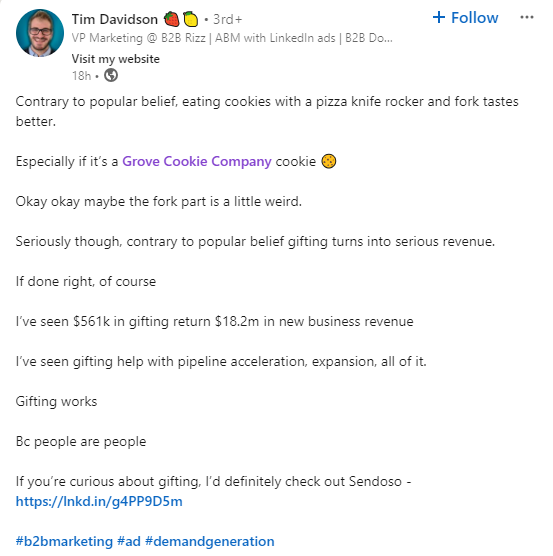
Tim Davidson, thought leader in marketing promoting a brand
5. Ask for Reviews
Online reviews mostly come from complete strangers rather than friends and family, but they still invoke trust because they’re not coming from the brand itself. In fact, more than 95% of consumers say reviews are at least somewhat important when making a decision to purchase, according to e-commerce trust research by Okendo.
Customer reviews don't just help customers understand how well your product works. They also help customers make buying decisions by highlighting qualities that your business might not think of.
You can encourage customers to leave reviews for your SaaS on product review websites like G2, Capterra, Trustpilot, etc. These reviews provide social proof that tells others you’re doing something correctly
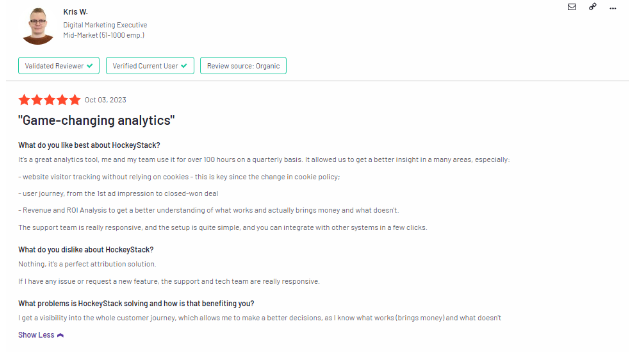
Review about HockeyStack on G2
6. Encourage Employee Advocacy
When you post solely from your brand account, your reach is largely restricted to your own followers; when you encourage employees to post and boost your content, you are automatically reaching a larger audience.
Think about it. Ever notice that a lot of brand content on LinkedIn doesn’t rack up a ton of likes and shares?
As we already mentioned, people are trusted more than brands. Customers will always be more likely to follow and engage with the content of your employees than your company page.
So whether you have just a few or a hundred employees, investing in an employee advocacy program is a great way to introduce your SaaS to more players in your industry and get more eyes on your content.
7. Create Memorable Experiences
One of the best ways to get people talking about you and capitalize on word-of-mouth is to create memorable and shareable experiences, you know, the ones that make them talk about you. With the rise of social media and the fact that people love to talk about their experiences, getting them to talk about you is incredibly easy.
We won’t simply say that something is easy without showing you how to do it. You can get people to talk about your brand by hosting anything from multiple-day conferences to small gatherings that bring your community together. Creating these experiences through different events gives people something to show off on their social media profiles. Such shared experiences become the base for online conversations about your brand.
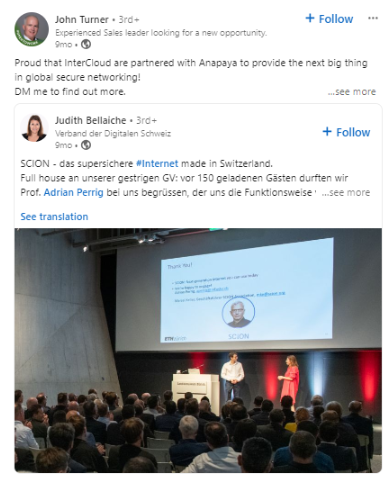
People sharing the experiences they had with Anapaya at SCION
Another way to create a memorable experience for your users is by personalizing their onboarding process, providing customer support all the time, or adding cool features to your SaaS.
By focusing on creating the best experience for your customers, you grow your base of loyal advocates who love your brand and who can’t stop talking about you. In a world of so many options, creating memorable moments leaves long-lasting imprints on your customers' minds.
Conclusion
The real benefit of word-of-mouth marketing isn’t in coming up with some super viral content but in offering something that is valuable and something that people can’t resist sharing with others. Every time you plan a new product launch, content marketing strategy, or email campaign, think about how you can implement word-of-mouth in it.
To always trigger organic word-of-mouth marketing from your customers, start with a great product and excellent service, and take it from there.
.png)
